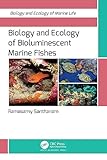Biology and Ecology of Bioluminescent Marine Fishes Ramasamy Santhanam
Material type: TextPublication details: Canada Apple Academy press 2024Description: 331+xiiiISBN:
TextPublication details: Canada Apple Academy press 2024Description: 331+xiiiISBN: - 9781774913154
- 572./435817 SAN-B
| Item type | Current library | Home library | Collection | Call number | Status | Date due | Barcode | |
|---|---|---|---|---|---|---|---|---|
 Book
Book
|
Dept. of Aquatic Biology and Fisheries Reference | Dept. of Aquatic Biology and Fisheries | Reference | 572./435817 SAN-B (Browse shelf(Opens below)) | Available | AQU6493 |
Browsing Dept. of Aquatic Biology and Fisheries shelves, Shelving location: Reference, Collection: Reference Close shelf browser (Hides shelf browser)

|

|

|

|

|

|

|
||
| 571.6 LOD-M9 Molecular cell biology | 571.638 POR-A4 Animal cell biotechnology: methods and protocols / | 571.9697 BUC-P Principles of fish immunology: from cells and molecules to host protection / | 572./435817 SAN-B Biology and Ecology of Bioluminescent Marine Fishes | 576.8/8 GOL-F From observations to optimal phylogenetic trees : phylogenetic analysis of morphological data / | 576.8/8 GOL-R Refining phylogenetic analyses. | 577.22 HAN-C3 Climate change biology / |
This enlightening new volume details over 200 species of bioluminescent marine fishes along with their biotechnological and therapeutic applications. It delves into the chemistry, diversity, and functions of these fishes and also discusses their biology and ecology aspects.
Bioluminescence, which is a type of chemiluminescence and is a “cold living light,” is seen in a wide variety of organisms from bacteria to fish. The chemicals and circumstances involved in marine bioluminescence are studied by biologists and engineers to make use of this phenomenon for biotechnological, commercial, and therapeutic applications. Bioluminescence imaging technology has provided valuable means for the monitoring of different biological processes for immunology, oncology, virology, and neuroscience. A new emerging biological technique that combines luminescence with optogenetics involves the use of light to control cells, particularly neurons, in living tissue. Bioluminescence may also be as a potential form of green energy.
The author states that more than 75% of deep-sea creatures (700 marine genera within 16 phyla) have been estimated to possess this phenomenon of bioluminescence. While marine plants do not display bioluminescence, several organisms such as the dinoflagellate, Noctiluca, cnidarian, jellyfish, ostracod crustacean, Vargula, molluscan squids and lantern fish are well known for their luminescence. Bioluminescence is employed by marine organisms mainly to hunt their prey, to defend against predators and in reproduction.
This scientifically comprehensive and well-illustrated book will serve as an essential standard reference for students and teachers as well as marine biologists, fisheries scientists, zoologists, and environmentalists.
Bioluminescence: Chemistry, Diversity, and Functions
2. Biology and Ecology of Bioluminescent Marine Fishes
Marine Fishes with Intracellular Luminescence
Acropomatiformes
Alepocephaliformes
Aulopiformes
Batrachoidiformes
Clupeiformes
Kurtiformes
Lophiformes
Myctophiformes
Heteromi (Notacanthiformes)
Saccopharyngiformes
Scombriformes
Stomiiforme
3. Marine Fishes with Bacterial Luminescence
Ponyfishes (Leiognathidae)
Anguilliformes
Argentiniformes
Aulopiformes
Gadiformes
Lophiformes
Trachichthyiformes
4. Marine Fishes with Extra Cellular Luminescence (Luminous Secretion)
Alepocephaliformes
5. Marine Fishes with Extrinsic Luminescence by Luminous Ingested Crustaceans
Acropomatiformes
Kurtiformes
There are no comments on this title.

